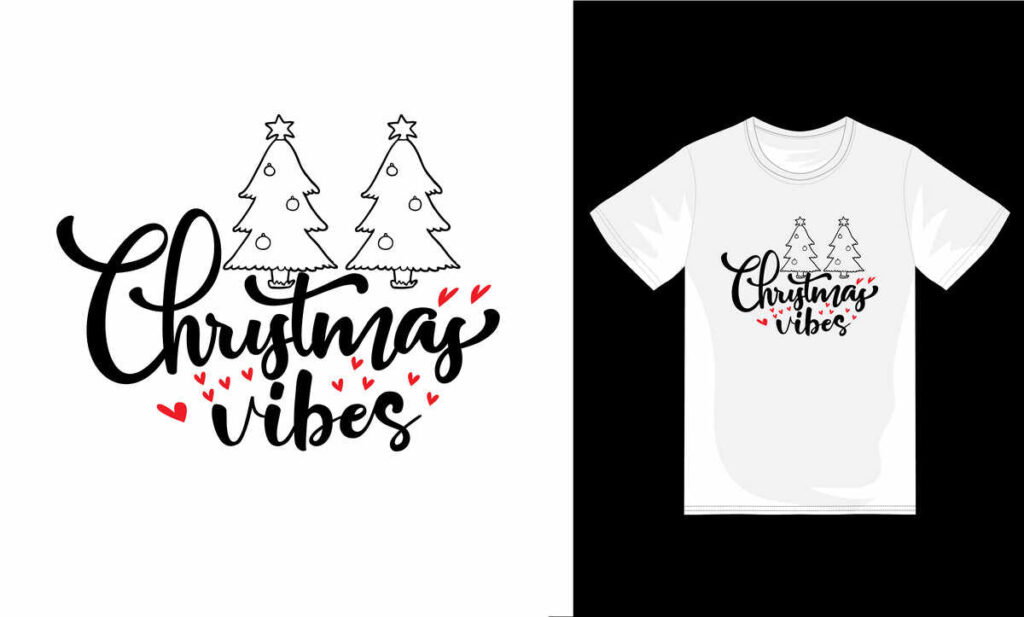In the ever-evolving world of printing, DTF techniques are revolutionizing the way designers engage with their craft. Direct to Film (DTF) printing has emerged as a leading choice for professionals seeking to expand their creative capabilities with vibrant and durable prints. With the introduction of advanced DTF techniques, designers can now explore a plethora of customization options that cater to contemporary design trends while also considering eco-friendly printing methods. This approach not only enhances visual appeal through innovative layering techniques but also aligns with the growing consumer preference for sustainable practices. As this blog will unveil, the synergy between DTF printing and modern design trends is unlocking exciting new business opportunities in a competitive marketplace.
As we explore this topic further, it’s important to recognize that Direct to Film printing encompasses a range of innovative processes and methods that redefine traditional printing applications. Known for its versatility, this advanced custom printing technique allows for intricate designs that can be seamlessly transferred onto various materials. With an increasing emphasis on environmental sustainability, these modern approaches prioritize eco-friendly printing, making them an appealing choice for conscious consumers. Moreover, the integration of layering techniques has become popular, enabling designers to create complex visuals that capture attention. Thus, our discussion will provide insights into how these transformative DTF techniques are shaping the future of the printing and design industries.
Exploring the Fundamentals of DTF Printing
Direct to Film (DTF) printing is revolutionizing the printing landscape by offering enormous versatility and striking quality. Unlike traditional methods such as screen printing, DTF involves printing designs onto a special film, which is then heat-transferred onto the desired material. This method stands out for its ability to deliver vibrant colors and intricate designs, making it a popular choice among apparel brands and creative designers. The adaptability of DTF allows for its use on various substrates, including cotton, polyester, and nylon, catering to a wide array of fashion and merchandise applications.
Furthermore, DTF printing’s efficiency in producing small runs of high-quality prints is gaining traction with businesses seeking customized solutions. The process minimizes waste and reduces the need for extensive setup, making it cost-effective for small orders. As a result, we are witnessing a surge in interest across various sectors, from T-shirt printing to promotional merchandise, highlighting the accessibility and appeal of DTF in the modern market.
Innovative DTF Techniques
A remarkable aspect of DTF printing is the emergence of innovative techniques that elevate design quality and application versatility. Recent advancements include improved ink formulations designed to work seamlessly with the DTF process, providing better adhesion and longevity of prints. These inks are now often water-based, aligning with sustainability efforts in the industry and reducing the environmental impact typically associated with traditional printing. Companies that harness these new formulations are witnessing not only enhanced print quality but also a positive shift in consumer perception as eco-conscious buyers increasingly opt for sustainable options.
Additionally, technology integration within DTF printing has expanded the creative possibilities for designers. Enhanced software capabilities have streamlined color management and pre-press processes, significantly reducing production errors and saving valuable time. By adopting these innovative DTF techniques, designers can focus on creativity while also improving their operational efficiency, allowing them to respond swiftly to market trends and consumer demands.
Layering Techniques in DTF Printing
One of the key design innovations in DTF printing is the use of layering techniques, which allows for rich, textured prints that stand out visually. Layering involves applying multiple ink layers to create depth and complexity, enabling designers to experiment with textures, gradients, and vibrant colors. This method transforms ordinary designs into captivating works of art, presenting opportunities for distinctive branding and personalization, especially in the fashion industry.
Moreover, the layering approach is not just about aesthetics; it offers practical benefits in terms of durability. The layering technique can enhance the wear resistance of designs, ensuring that prints endure wear and tear over time. Consequently, brands that adopt this DTF methodology can benefit from prolonged product lifespans, ultimately leading to higher customer satisfaction and diminishing returns from damaged goods.
The Role of Sustainability in DTF Practices
As environmental concerns continue to intensify, the DTF printing industry is actively seeking ways to implement eco-friendly practices. Many businesses are now opting for biodegradable films and low-impact inks, addressing the demand for sustainability from consumers who value responsible production methods. By prioritizing eco-friendly materials, DTF printers not only contribute to environmental protection but also attract a demographic that is increasingly conscious of their purchasing choices.
Furthermore, the shift towards sustainable practices in DTF printing can serve as a competitive advantage in the marketplace. Brands that communicate their commitment to sustainability can strengthen their identity and foster brand loyalty among customers, particularly millennials and Generation Z, who show a marked preference for companies that uphold environmental stewardship. In this context, integrating sustainable practices into DTF printing is more than just a trend; it represents the future direction of the industry.
Customization Trends in DTF Printing
The growing demand for customized products is transforming the DTF printing landscape, presenting brands with opportunities to engage their customers more deeply. DTF printing techniques support an extensive range of personalized designs, allowing designers to create unique items that resonate with individual preferences. This increased flexibility has become crucial for businesses targeting niche markets that thrive on personalization, offering everything from custom apparel to one-off promotional items.
Beyond just aesthetics, customization in DTF printing goes hand-in-hand with consumer engagement strategies. When brands offer consumers the chance to customize their purchases, it enhances the overall shopping experience and encourages repeat business. As a result, companies leveraging DTF customization techniques often experience higher customer loyalty and increased sales, a trend that underscores the importance of adapting to consumer desires in a competitive marketplace.
Emerging Business Opportunities with DTF
As the DTF printing market continues to expand, it brings forth a wealth of business opportunities across various sectors. The method’s cost-effectiveness and efficiency in producing short runs make it an attractive option for businesses looking to capitalize on custom prints. Analysts predict that not only apparel brands will benefit from DTF adoption; promotional product companies and various merchandise sectors are also poised for considerable growth as consumer demand for personalized items surges.
Moreover, the versatility of DTF printing allows businesses to tap into diverse markets, from fashion and sports apparel to corporate merchandise and event branding. As companies recognize the potential for differentiation through unique design offerings, investment in innovative DTF printing solutions will likely increase. This evolution presents a favorable landscape for entrepreneurs and established businesses alike to explore and exploit the rising tide of custom printing techniques.
Frequently Asked Questions
What are DTF printing techniques and how do they work?
DTF printing techniques involve transferring a design printed on a special film to fabric using heat. This process ensures vibrant, durable prints on various materials, making it a popular choice among custom printing professionals. By applying innovative technologies, these techniques enhance print quality and efficiency, catering to the growing demand in the industry.
What advancements in DTF printing technology are currently shaping the industry?
Recent advancements in DTF printing technology include new ink formulations that improve adherence and durability while focusing on eco-friendly practices. Water-based inks are gaining traction for their reduced environmental impact, aligning with consumer preferences for sustainable printing solutions. Additionally, software enhancements facilitate better color management and streamlined processes, boosting overall productivity in DTF operations.
What are the key design trends in DTF printing?
Key design trends in DTF printing include layering techniques that use multiple layers for textural depth and visual interest. Customization is also significant, allowing creators to offer unique, personalized designs that resonate with consumers. Staying updated on these trends is essential for designers to remain competitive in the evolving landscape of DTF printing.
How do eco-friendly practices influence DTF printing techniques?
Eco-friendly practices play a crucial role in DTF printing techniques by promoting the use of biodegradable films and low-impact inks. As sustainability becomes increasingly important to consumers, printers adopting these practices gain a competitive edge and attract a loyal customer base. This shift towards environmentally responsible printing not only meets market demand but also contributes to a positive brand image.
What business opportunities are available through DTF printing techniques?
DTF printing offers significant business opportunities across diverse sectors due to its cost-effectiveness and efficiency in producing customized designs and short runs. Industries such as apparel, promotional products, and merchandise are particularly benefiting from the growing adoption of DTF techniques, leading to increased demand and market growth.
How can layering techniques enhance DTF printing designs?
Layering techniques in DTF printing can significantly enhance designs by adding depth, texture, and visual contrast. This approach allows designers to experiment with gradients and intricate patterns, creating striking effects that captivate consumers. By mastering layering techniques, designers can push creative boundaries and produce unique, compelling prints.
| Key Area | Innovative DTF Techniques | Impact on Design | Sustainability Practices | Business Opportunities |
|---|---|---|---|---|
| Advancements in Technology | New ink formulations improve durability and color vibrancy. | Creates visually appealing designs with greater depth. | Encourages eco-friendly printing methods. | Increases cost-effectiveness and production efficiency. |
| Software Enhancements | Improved color management and pre-press processes reduce errors. | Facilitates complex design layering. | Supports sustainable production through reduced resource usage. | Boosts productivity in design operations. |
| Design Trends | Layering and customization are key trends in DTF. | Enhances creative expression through unique designs. | Allows for personalized products catering to niche markets. | Engages customers and drives sales through individuality. |
| Sustainability Focus | Utilizing biodegradable films and low-impact inks. | Aligns design practices with growing environmental awareness. | Addresses consumer demand for eco-friendly products. | Attracts socially responsible clientele. |
Summary
DTF techniques are revolutionizing the realms of design and printing, offering exciting prospects for creativity and sustainability. This innovative approach not only leverages the latest technological advancements but also aligns with current design trends, enhancing customization and eco-friendly practices. By focusing on these DTF techniques, designers and businesses can elevate their projects to meet the evolving demands of the market while ensuring that their work stands out in a fiercely competitive environment.



